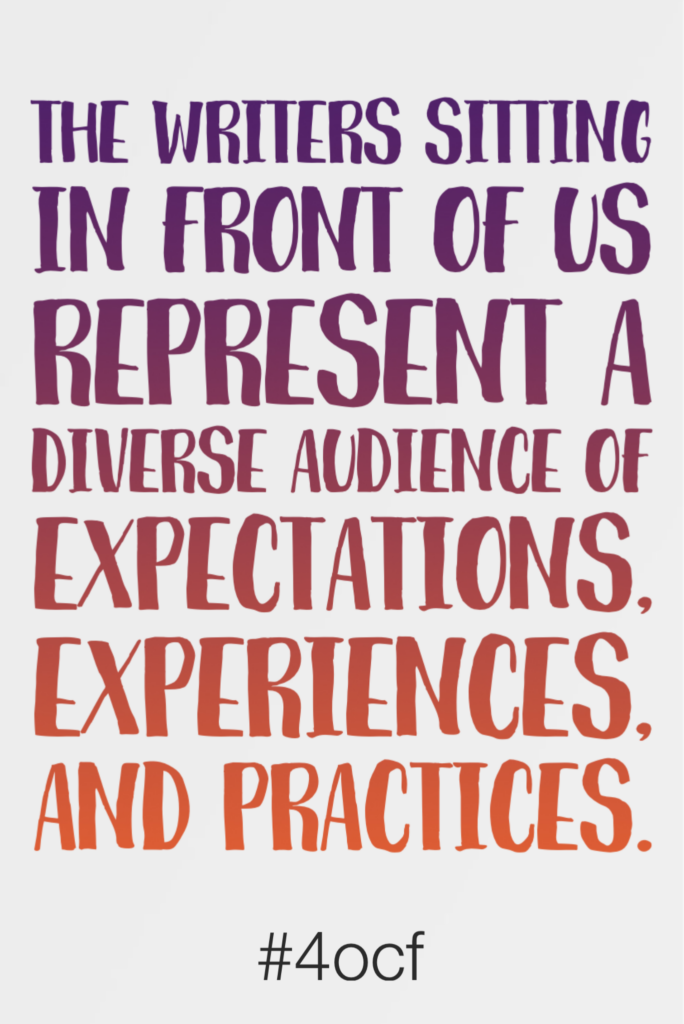I just finished reading Craft in the Real World: Rethinking Fiction Writing and Workshopping by Matthew Salesses. The book examines how stories are told, who tells them and how writing workshops were originally designed with only one audience in mind. While the book speaks about the larger effects on writing craft for those who go on to write for a living, I think the book has major implications for how we teach writing to kids.
Some takeaways:
Expectations are not universal. We hold students to a certain standard and writing expectations that were originally designed and intended to benefit a white, male audience. The writers sitting in front of us represent a diverse audience of expectations, experiences, and practices. We can’t expect that all of our students will write the same. We can’t expect that we should read our students’ writing using one standard lens. Always consider the experiences and expectations that a student brings to their writing. Don’t hamper them with a prescribed notion of what writing craft should be.
Craft says something about who deserves their story told. For many years, we’ve read the same kinds of stories written by the same kinds of authors to our students. When we show students one way to write and one expectation for what “good writing” looks like, we are intentionally holding back some students from sharing their stories. We need to recognize that diverse books in our classrooms will lead to students who feel empowered to tell their own stories.
The writers who face the biggest gap between the expectations of the workshop and the expectations of their actual audience are marginalized writers. The publishing world for years by putting certain types of books on shelves in front of us has led us to believe that a certain style of writing is what we want or need to see. Some of our marginalized writers can’t possibly feel as if their voices can be heard. At our K-12 level, some kids don’t even feel like writers because they are marginalized by the process, expectations, and the representations that they see. We marginalize some writers before they even become writers by telling them and (sometimes intentionally and sometimes unintentionally) modeling for them that their voice is not important.
While I was already thinking about what type of writing process and expectations we model for students, this book made me rethink the process through a completely different lens. We must consider the needs of all of our writers- engaged writers, reluctant writers, marginalized writers, writers who don’t yet realize they are writers. They bring important voices that need to be heard. We can’t continue to bring them a certain kind of writing instruction because it wasn’t designed for them in the first place.
Rethink your writing instruction. Start with this book.
Rich




